Welcome to Indie Horror spotlight! A place to highlight smaller creators who are making fantastic, unique experiences within the realm of horror. The following article contains both discussions and screenshots of subject matter including child abuse, suicide, self-harm, sexual themes, blood and gore. Proceed with caution and take care of yourself.
Somewhat Software is a micro-studio run by a two-person team from Montréal, Canada who focus on creating non-violent horror experiences. Using a retro PS1 aesthetic, moody atmosphere, and strange imagery they focus on adult subjects such as self-harm and sexual abuse. Each game is a short narrative experience meant to appeal even to non-gamers.
The indie horror scene is a lush and varied landscape of titles using many gameplay styles and Somewhat Software offers a thoughtful, dreamlike tone that may not appeal to the masses, but uses graphics, sound, and environmental elements to bring us into their world.
The following is a brief description of three games, and if they interest you I highly recommend playing them for yourself and supporting the developers. Following this is an interview with Somewhat Software discussing the themes behind their titles and the ban from Steam—the most popular online gaming marketplace—of their newest game, \SPEK.TAKL\.
I Make Saints
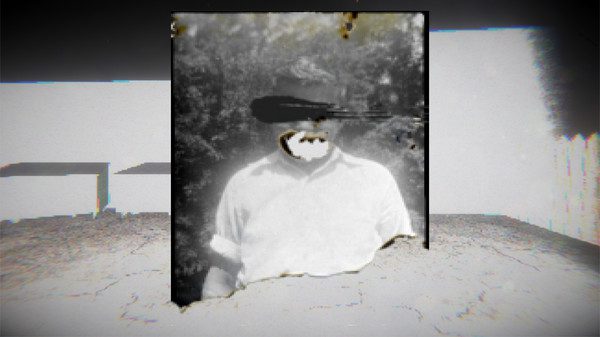
An extremely heavy trip into the mind of someone who has committed unspeakable crimes, using surreal religious iconography to explore guilt. Heavy warnings for sexual abuse.
I Make Saints is available on Steam and Itch.io.
The Shape On The Ground
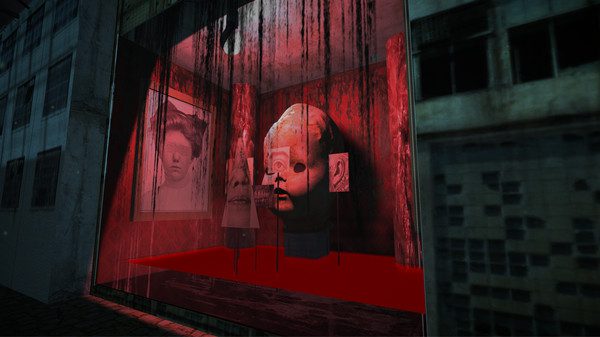
A series of dioramas that ask you a simple question: what do you see? Part tarot card reading and part walking simulator using our gut reactions to strange and sometimes violent scenes as a tool for self-reflection.
The Shape On The Ground is available on Steam and Itch.io.
\SPEK.TAKL\

A late-night TV viewing experience with heavy sexual themes, \SPEK.TAKL\ was banned on Steam for its use of public domain imagery of vintage eroticism. Are you the viewer or the participant in these events? Contains multiple endings depending on your choices.
\SPEK.TAKL\ will be available on Itch.io on August 18th.
Lor Gislason: All of your games deal with some serious and heavy concepts, even for horror. Was this intentional?
William: It was intentional as far as those concepts were what I initially wanted to explore. I will admit that I Make Saints was made about a shocking subject because I wanted the first game to make an impact, to grab the attention. It didn’t work at the time; the game flew under everyone’s radar on release but I still stand by it. The subject matter needed to disturb me to make sure it would disturb the players as well.
As for the other games, those came from personal introspection or anxieties I do have. Some people write songs about their problems, while I make games about them. It’s a similar process, really.
Moving forward, we are planning on exploring more fictional universes and ideas, but there will always be a personal, intimate element added to it. We’re too invested in our work for it not to show facets of ourselves, deliberately or not.
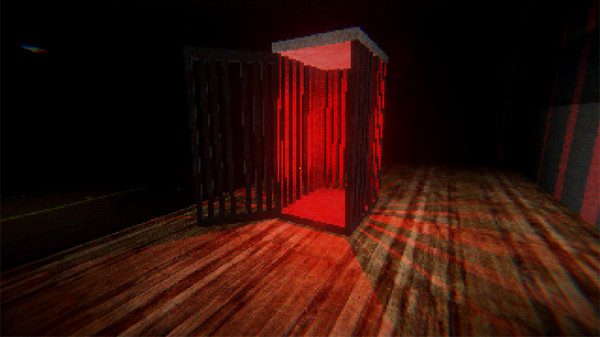
Danny: I wasn’t part of Somewhat Software when the games were out, but I played them all! I remember William telling me that writing I Make Saints was very hard, to the point of feeling an uneasy and dark mood during the process. I’ve known William for more than 20 years, so I know his edgy, gritty side when it comes to stories! He really puts his all into his ideas and all of Somewhat Games are a part of his fears and anxieties… Which I can easily relate to.
When I was young I wanted to be a horror writer and–being a very anxious person–I used my fears to write fiction in order to help me cope with my inner demons. It’s a very powerful way to name those monsters we all have and it gives you power over them. I think those games can make you think and the interaction gives another dimension to the experience.
LG: I was under the impression that you are both full-time game developers and Somewhat Games titles are more “for fun”. What is your development process like? Which parts does each of you handle?
William: Just to clear up any misunderstanding, we are full-time developers on Somewhat Software. The short version of the story is this: I was making games as a hobby from 2017 to 2020 under the pseudonym Somewhat, but we incorporated in January 2021, and we are now working on our own games full time under the name Somewhat Software Inc. Danny Something joined me during incorporation and we are now business partners in this project.
As for our process, I am very lucky that Danny is my counterpart in some aspects of project management. He helps me stay focused and organized. We are currently working on our largest project yet (still unannounced) and the need for structure is more important than ever.
For the nitty-gritty, I usually handle the environment design and lighting, since those are my favourite things to do anyway when working on a game. Danny takes over character design and modelling. We share programming duties, depending on the system (Danny works on the dialogue system, I work on playable character mechanics) and we both are experienced in making music so we’ll be writing the score together.
I’ve been very hesitant in the past using outsourced help, but we are currently working with at least one freelancer. It took me a while to accept that a team of 2 people just cannot deliver the product I have in mind and that we need to enlist the help of other creatives.
Danny: William summed it up pretty well. I’ve been in the 3D business for more than 10 years, as well as in graphic design, so I hope to add my experience to the upcoming projects in order to create all the crazy ideas we will have!
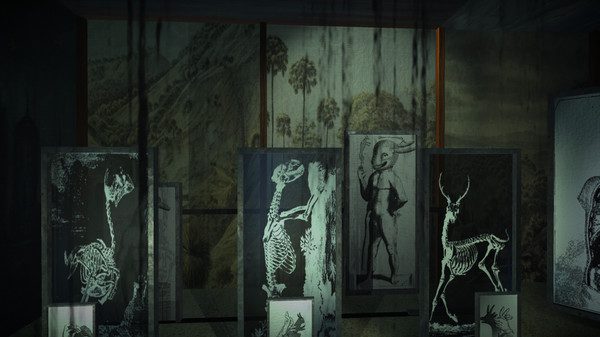
LG: Were you surprised when \SPEK.TAKL\ was banned from Steam? Can you tell us more about the game, how it came to be?
William: I was personally very surprised about the ban. I was expecting a back-and-forth with Steam on the content, and I was fully willing to cut on some content they did not want to host. But we weren’t given that chance, and the game was banned (and the appeal did not pan out either, yet) on the basis of the presence of actual actors performing sensual acts (strip teases, light bondage, all public domain material of people who I suspect are long dead). I know some fans were looking forward to having \SPEK.TAKL\ on Steam, and I am sorry the circumstances did not allow us to deliver on that.
I hesitate to openly talk about the actual subject matter of \SPEK.TAKL\, because the game has some intimate roots in my personal life. I can say that much, however–I spent a year more or less waiting to see if a medical condition I had would develop into cancer. It did not, but that year left me with a fear of my own body turning against me and allowed me to observe my own unfortunate coping mechanisms. This is what the game is about, in a nutshell: fear of the finality of one’s body, how we sometimes are reduced to simple spectators in that process, and the things we do to ignore/avoid/forget about it.
Danny: I consider \SPEK.TAKL\ to be William’s magnum opus, personally! It is a complete experience with a few gaming elements and I really enjoy the mood of the apartment at night, as well as the Cronenberg influences throughout the experience.
My contribution to the game is more on the quality assurance side and discussions about the new ending for the Banned Edition. Speaking of banning, I was really taken aback by Steam’s decision and surprised by the fact that they refused to negotiate in any way to modify the content in order to let us sell it on the platform. There was no discussion possible, whatsoever. They have their reasons, I respect that… but we are open individuals who are ready to discuss and not afraid to modify our content if necessary. But hey–the show must go on as they say and we’ll roll with the punches.
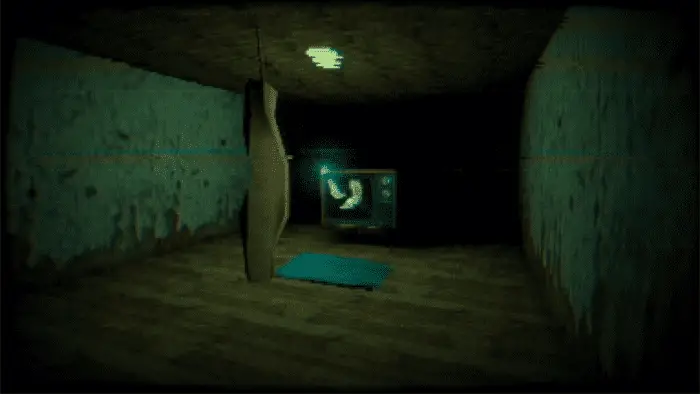
LG: \SPEK.TAKL\ features a lot of sexual elements. Besides Lust from Beyond, I can’t really think of any recent examples of sexuality in games. It’s more often used in films (like Cronenberg obviously). Do you think it’s just because of the medium? Is it more difficult to have psychosexual elements in games?
William: For the longest time, adult games were not produced because having an AO ESRB Rating meant that your game would not be sold in Target and Walmart. It made economic sense, I suppose, to avoid sexual elements in order to be sold to the widest market available. Anyway, the few games that bothered to get the AO rating was–for the vast majority–pornographic games.
What I am personally interested in is redefining what an ‘Adult’ game is. It doesn’t have to be pornographic to be adult. That much is obvious to you and me, but years of gaming marketing created this limited view of the Adult tag. What if an adult game meant we got to explore everything that makes us an adult human, including sexual urges and interests, or violent urges that are not acted upon, for example? Making non-violent horror games for adults who are willing to explore their own anxieties (be they sexual or otherwise) is the kind of building block we want to add to the medium.
Danny: When a piece of entertainment explores sexuality, it becomes immediately complicated and often associated with porn with little to no nuances around it. We all know how the video game industry is a very, very thin line to walk on when it comes to adult themes. We want to explore the complexities of human anxieties and sexuality is, I think, a huge part of it.
We are trying to open the door to the possibility of talking about those complex matters in our games, where the term “mature” doesn’t necessarily mean violence and gratuitous sex, but modern adult fears and anxieties in our daily lives that become creatures we don’t comprehend that can become inner horror stories in a way. And since the dawn of time, sexuality is often misunderstood and is part of those adult anxieties even today.

LG: Self-described as ambient and intimate, I completely agree with this. When I played I Make Saints, even with the quite dark content (collecting murdered children’s photographs) I found the experience overall to be quite tranquil. Does the intersection of these ideas—the disturbing and the calming—factor into development from the get-go?
William: I think this mood is a by-product of my own intentions as a game designer. I am much more interested in creating places, spaces, and ambiances than making an actual game with engaging mechanics for hardcore players. I’ve often found myself being a spectator or a witness of my own life; I recall so many moments where I just enjoyed being somewhere, and socially dissociating with whatever else was going on around me. This is what my brain has absorbed the most information about, I believe, and it reflects in the environments I create. But at the same time, I am an anxious wreck of a person, very scared of everything all of the time, so the end result is that I make games reflecting this state of being: tranquil and moody places where you can feel dread in a safe way. Why would you want that, as a player? I don’t know. Thank you for buying our games nonetheless, haha.
Basically, I’ve always thought that if you, as a player, really dig our work then you and I are automatically best friends since you connect to the deepest part of who I generally am as a person.
Danny: I must say that I love the interaction in video games and it may come as a contradiction with William on that end! But playing his games before becoming part of Somewhat made me discover walking simulators and I must say that your imagination becomes the interaction in some way. You know as a player that there is no threat in the game but, at the same time…is there? Your mind creates doubt and it soon becomes an anxious mood. In those kinds of games, the sound is absolutely important and William’s games deliver all the way on that part.
LG: In fact, all three games (The Shape on The Ground, I Make Saints, and \SPEL.TAKL\) are more audio-visual experiences rather than games. It’s not really about having fun but the emotions you are brought to because of what’s presented. Do you think in this way they are up to interpretation, unique to each player? What do you hope players “get” out of the games?
William: I’ve discussed it in the last question, but yes, our games are barely games and are not really about having fun. We are however moving more towards making them ‘gamey’ because if we want a shot at living off of our production, some degree of gameplay expectations are to be met and I recognize that. That’s me selling out, but you’ll only see what that means next year when we release our new thing.
Until then, I am very happy to see people come out of playing our titles with personal interpretations. I did disclose a lot about what \SPEK.TAKL\ is about earlier in my answers to your questions, but that does not mean the game shouldn’t take a more personal meaning to other players. It was once suggested that the game was about the withdrawal effects of quitting drugs or meds, and I can totally see it, and I agree with it, and I decide it is also canon.
Each new interpretation of the games reveals just as much about the game, the player and ourselves as creators of the game, and I welcome it.
Danny: It’s like musical lyrics, ya know? We all have a song where the words connect so much with our core that it becomes personal and intimate to us. However, the songwriter created the song with specific emotions in mind, often related to very personal moments or situations. In the end, once the creation is out, anyone who is in contact with it can add their own meaning to it.
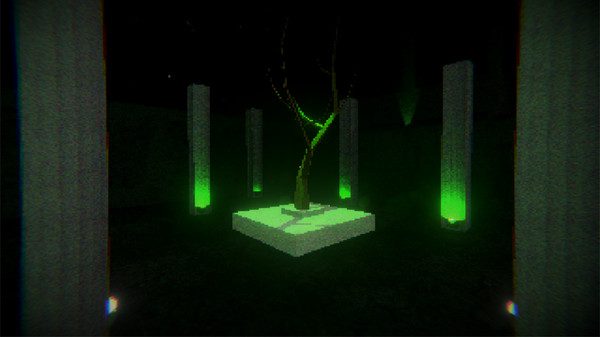
LG: I feel like there can be a bit of entitlement from gamers in regards to game length and “value”, while I believe short-form horror is one of, if not the most effective form of the horror genre. (I know you’ve written a blog post about these and other issues.) How do you deal with these frustrations?
William: I think at this point it is getting pretty notorious that I do not deal well with this at all. I have this tendency of reducing everything that happens to me or the studio down to ‘how is it my fault’? I am a very guilt-driven individual, and while it is a somewhat toxic way to live it puts me in the position of asking myself what I can do to change it.
And I’ve been having trouble handling players’ expectations successfully because we make the least gamey games ever. So far I feel I have failed on many occasions to properly communicate to potential players what our games are and what to expect.
I believe short-form horror games are a valid form for the medium, very effective in delivering its intentions, but setting up shop on Steam has confronted us to players who are not there yet in terms of seeing what is possible with the length and structure of games. I do not enjoy being the studio that shows those gamers that sometimes games do not need to have fail states, for example. It is not the fight I wanted to have with the larger audience. Somewhat Software is not the only dev team making ambient walking simulators, so we are not special martyrs or anything. Just…I’d rather just make niche games to a niche audience, and live off of that in a humble way, far from the frustrations of dealing with people who ‘don’t get it.’ (Man, all of that made me sound pretentious, didn’t it?)
Danny: Those last few months really made me think about the question of the target audience of our games. While we want to target a very specific part of the gamer community (aka non-gamers, people who enjoy interactive experiences), being on Steam means being open to all the gamers around the world, even those who don’t really like that kind of game…but may buy it anyway only to leave a negative review on the dev page.
I understand the frustration of buying a game and being disappointed… but reading the game’s Steam page is also important because it may redirect you to a game you really want to play! We are aware that our games are very niche and therefore, will not be for the player who wants to shoot zombies for hours. It’s all on our Steam page.
So yeah, we do what we can but we have no control once we establish what kind of game we sell. Our next project will open to a larger audience and be more of a game… so we will change our scope for our target audience for that one!
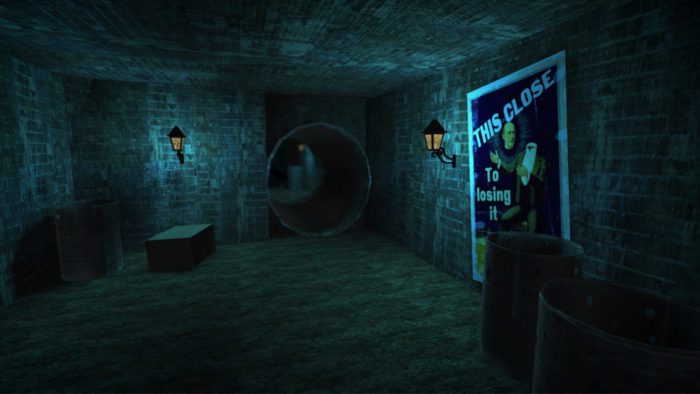
LG: How do you feel about AAA horror games being action rather than horror these days?
William: I do not concern myself too much with AAA horror game design. I understand they work with very different imperatives than I do. The risk/reward of making a multi-million dollar project makes it so they need to take the least amount of risk possible, but that is nothing new. I play these games too so I am just as guilty of encouraging this state of affairs as every other player. Encouraging them with my money might be part of the problem I was mentioning earlier about how some players are resistant to redefining the length and structure of a horror game. Again, I am my own worst enemy.
Danny: I rarely play those, to be honest, but they can be fun from time to time. I become very anxious while playing them though, so I don’t finish most of them!
But from a dev standpoint, I don’t mind them at all. There is a huge market for it and I understand why. Would I like to do that kind of horror game if I had a chance? Sure… if there is a twist or something unique about it. If not they will rarely get my attention because there are so many.
LG: The indie horror community takes a lot of inspiration from PS1 titles and that era of gaming–what draws you to this style?
William: The low-poly aesthetic simplifies everything. Like…everything.
Whether it is making simpler 3D models, (thus saving us time and effort) or making the environments less cluttered and more readable or making the horror elements more raw, vague, more open to interpretation, the low-poly look of PS1 era games helps with everything an indie horror game should be, really.
We are trying to work with a different style right now, with our newest project. Taking cues from early Source engine games, like a PS2-level of detail with wild coloured but still slightly unrealistic lighting. Bottom line is, we need to stay in a visual style that makes it possible for the smallest dev team to deliver the project. I don’t think we’ll ever strive for photo-realistic quality, it’s just not achievable for us without going bankrupt.
Danny: Games like Silent Hill on the PS1 really created a nightmare-fuel experience that really got to me when I was a teenager. Since the details are vague your imagination just fills the gaps and it can be a memorable experience, especially with the sound design that can add to the horror. And again, it is far simpler in terms of 3D modelling and texturing for sure.
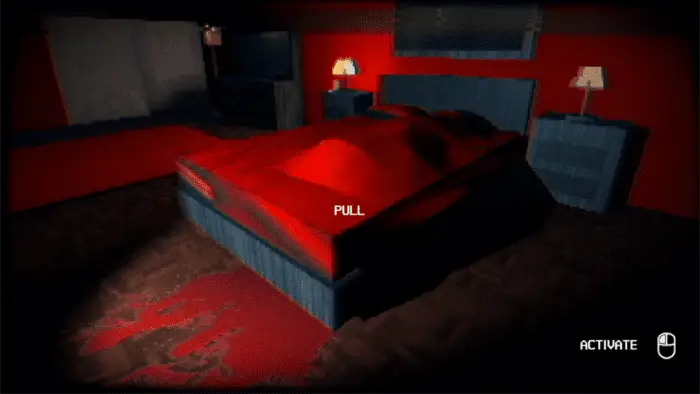
LG: What are some of your personal favourite indie horror titles?
William: I tend to look for what I like to call micro-indies–games made by one person or a very small team and self-published. With that in mind, the games that made me realize that one could create a valid interactive experience as a solo creator are the works of Kitty Horrorshow (especially Ghost Lake and Anatomy) and Puppet Combo’s Power Drill Massacre. Those are at extreme opposite ends of the micro-indie horror spectrum but they convinced me there was something to this medium. So those are personal favourites.
More recently, the list is too long to really give it justice. The works of the HauntedPS1 community, of course, needs to be mentioned: works such as Valerie Dusk’s Bleakstead, Bryce Bucher’s Fatum Betula, Autumn Rain’s Be Not Afraid, or from other devs like Yames’ Discover My Body… Just follow Somewhat Soft’s Twitter account, I try to signal boost every project I love.
Danny: I must confess: I don’t play a lot of indie horror games… but I want to! William shows me lots of indie games that seem brilliant and talks to me about game creators that are very inspiring. I must say that I saw a Let’s Play of Puppet Combo’s Murder House and it is intense! I love it! Speaking of Puppet Combo’s games–I am more of a horror movie aficionado and his games really nail the 70’s grindhouse slasher genre perfectly!
LG: Finally, tell us a fun fact about yourselves!
William: Danny and I worked on a YouTube comedy channel together a few years ago before creating the studio. It’s in French, wasn’t very popular at the time and I won’t tell you what it is or link to it but know that it’s out there.
Danny: We once tried to write a thriller web series together but it was too ambitious for us at the time! The story was about a guy who is accidentally involved in the murder of a hitman who is part of a secret organization of contract killers named after Tarot Cards…We had lots of ideas for that one…too much, I think. (Hey, maybe an idea for a future game?)
Thank you to William and Danny for chatting with me. Be sure to follow the Somewhat Software Twitter account as well as their Steam and Itch.io pages.


